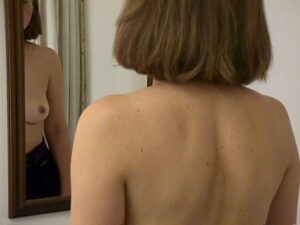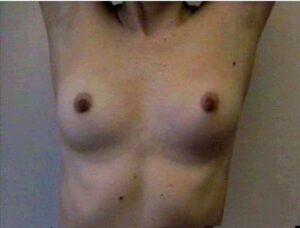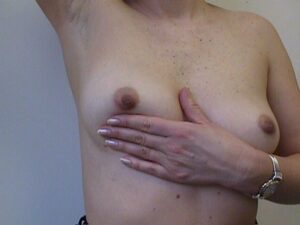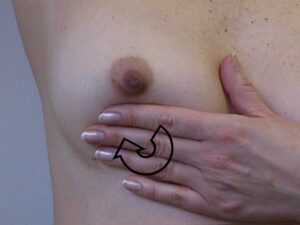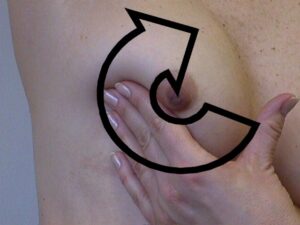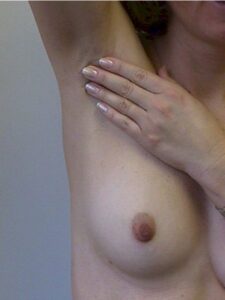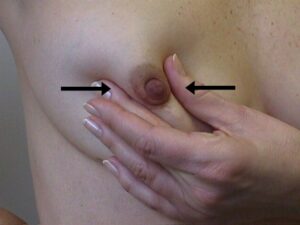Self breast exam comprises one portion of the triad of early detection of breast abnormalities, the other two being professional breast exams and screening mammography. This is appropriate, as most breast abnormalities are first discovered by the woman herself.
Once a month, just after completing a menstrual flow, a woman should examine her breasts. This can be done in the shower, but at least part of the exam should be done while standing in front of a mirror.
She inspect her breasts for:
- Skin changes
- Redness
- Visible bumps
- Nipple crusting
- Symmetry
When raising her arms up, both breasts should rise evenly on the chest wall.
While raising her arms, she should watch closely for any skin dimpling or nipple retraction.
With her arm raised, she should feel for lumps with the opposite hand.
Most breast tissue is somewhat nodular. She is feeling for a “marble in a bag of rice.”
She should move her hand in small circles while compressing the breast tissue.
Then she should move to another area and perform the same small circular examination.
Many people find it easiest to move in a clockwise fashion to avoid missing any areas of the breast.
The same circular motion should be used to exam the armpit and the “tail” of the breast that extends up into the armpit.
In the armpit, she is feeling for any breast lumps or lymph nodes. Enlarged lymph nodes are about the size of a pencil eraser, but longer and thinner.
She should try to express nipple discharge by stripping the ducts towards the nipple.
Normally, there will be one or two drops of clear, milky or green-tinged secretions.
While recommended by some professional organizations, routine self breast exam is no longer recommended by most. This change in policy is based on several observations:
- By the time a breast cancer is large enough to be felt by the woman, it has likely been present for a number of years. This is not early diagnosis. There is no good evidence that breast cancers discovered in this way have a better (or worse) prognosis than those discovered at periodic professional exams.
- Women who conscientiously perform self breast exams frequently find palpable masses. These masses (99% benign) require evaluation, sometimes mammography, ultrasound and biopsy, all of which have costs (financial, emotional and medical) which only infrequently lead to the discovery of a breast cancer.
- Large international studies of self breast examination on a routine basis have failed to identify the hoped-for benefit.
The current status of self breast exams remains controversial.

